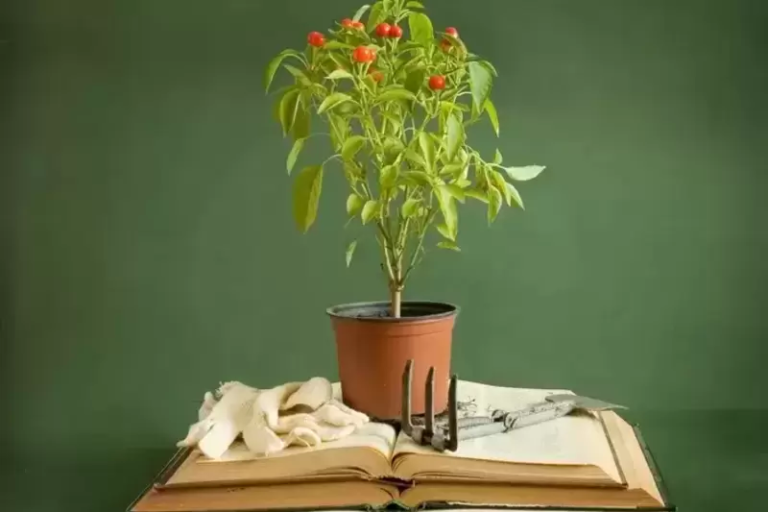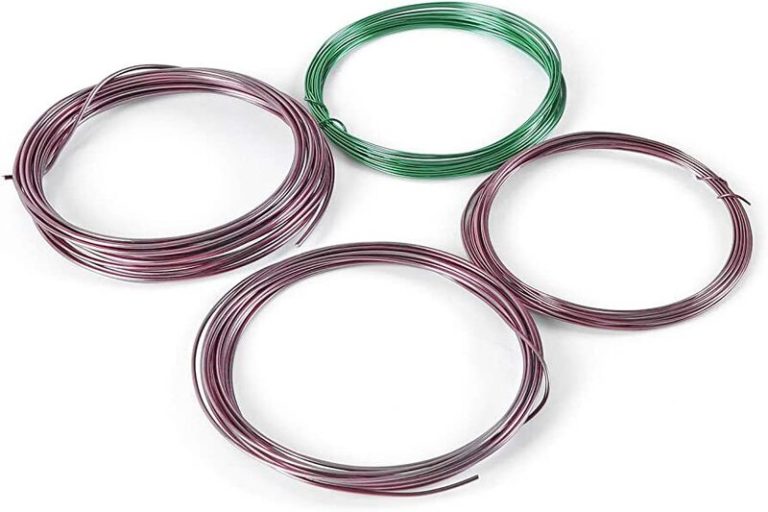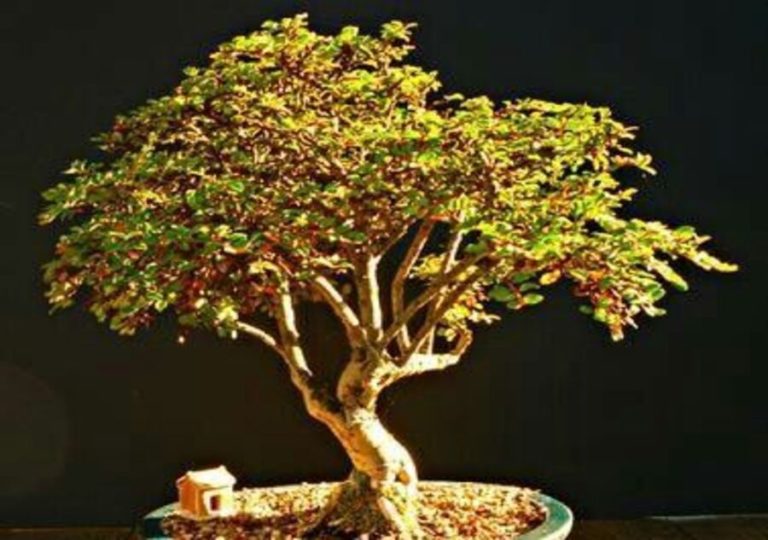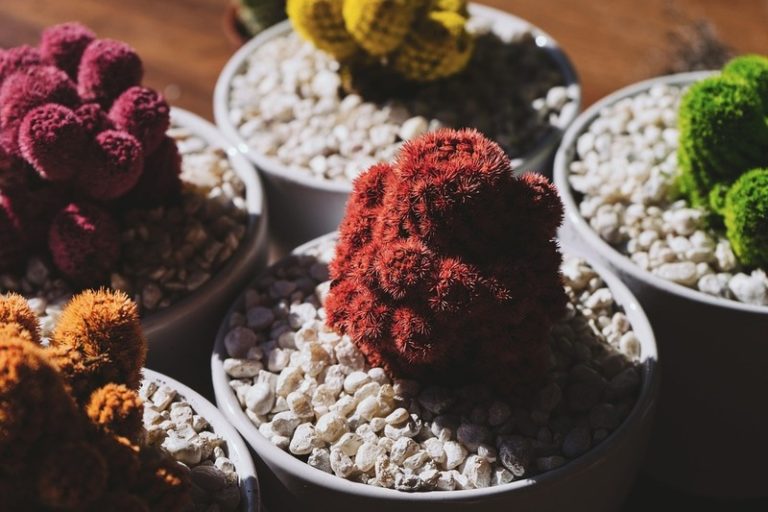Jade Bonsai: Discovering the Charms of Miniature Foliage
Jade bonsai trees are miniature marvels that infuse our dwellings with the serenity of nature. After extensive craftsmanship and care, these miniature trees have amassed a substantial heritage and provide a multitude of advantages. This article will provide an in-depth analysis of Jade bonsai, including their history, attributes, maintenance recommendations, and the delight they elicit among hobbyists.
What is Jade Bonsai?
Jade Bonsai is a miniature tree crafted from the South African Jade Plant (Crassula Ovata). A popular bonsai variety, it is distinguished by its robust branches and dense, glossy foliage. Jade Bonsai, which has been achieved by means of precise pruning and shaping techniques, is symbolic of prosperity and good fortune. Enthusiasts favor it for its aesthetic allure and low maintenance requirements in both indoor and outdoor environments.
History and Origins of the Jade Bonsai
The historical and cultural origins of the Jade Bonsai can be traced back to the ancient Chinese and Japanese civilizations, whose centuries-long bonsai cultivation tradition is widely recognized. The art form referred to as bonsai, which translates to “planted in a container” in Japanese, is thought to have originated in China over a millennium ago. Following this, the Japanese embraced and refined bonsai, thereby elevating it to the status of an authentic artistic expression.
In the ancient Chinese era, microscale landscapes were created with the intention of depicting natural environments at a diminished magnitude. These settings, referred to as penjing, functioned as the forerunner to the discipline of bonsai art. Miniature landscapes and trees served as dexterous depictions of natural scenery and vegetation crafted by Chinese scholars and artists.
As a consequence of the gradual development of techniques for cultivating and shaping these diminutive trees, bonsai emerged as an artistic expression.
Critical to the development of the modern bonsai concept was Japan’s influence. Bonsai cultivation became an entrenched facet of Japanese culture and achieved prominence during the Kamakura period (1185-1333).
Japanese bonsai masters refined the techniques, emphasizing the importance of harmony, natural beauty, and equilibrium in the design of bonsai. Over the course of history, bonsai came to symbolize tenacity, self-restraint, and awe-inspiring reverence for the magnificence of the natural world.
To be more explicit, Jade Bonsai pertains to a cultivated variety of the indigenous Jade Plant (Crassula Ovata) found in South Africa. The inception of Jade Bonsai cultivation can be traced back to the fascination of bonsai enthusiasts with the plant’s unique characteristics, such as its succulent, dense foliage and ability to thrive in small containers. Due to its resilience and interior adaptability, it is a popular choice for bonsai cultivation.
Presently, Jade Bonsai continues to flourish as an artistic discipline, held in high regard by enthusiasts and artists across the globe due to its elegance and subtlety. The lasting appeal of Jade Bonsai as a captivating and intentional artistic medium can be ascribed to its exceptional qualities, which go beyond its profound historical and cultural importance.

Jade Bonsai and Their Symbolism
Jade bonsai possesses substantial symbolic importance across diverse cultures, embodying notions such as longevity, prosperity, and good fortune. Bonsai devotees hold Jade Bonsai in high regard due to the profound cultural connotations it embodies. An abbreviated synopsis of its symbolism follows:
1. Good Luck and Prosperity:
Jade Bonsai is regarded as a representation of fiscal prosperity and good fortune in numerous cultures. It is widely believed that displaying a jade bonsai in residences or workplaces will entice prosperity and positive energy, which makes it a popular decorative material.
2. Longevity and Endurance:
The tenacity and adaptability of Jade Bonsai serve as a representation of longevity and perseverance. Considered frequently to be a metaphor for longevity and good health, the plant’s tenacity renders it a thoughtful present, particularly on special days or anniversaries.
3. Balance and Harmony:
Bonsai, including Jade Bonsai, exemplifies the natural principles of equilibrium and harmony. The tree’s meticulous pruning and shaping symbolize the intricate equilibrium between human intervention and the inherent splendor of nature, thereby exemplifying the harmonious coexistence of beings with their surroundings.
4. Tranquility and Stress Relief:
Providing for a jade bonsai can induce feelings of calmness and meditation. Engaging in the activity of pruning the tree, monitoring its development, and molding its branches all contribute to a state of calm and serenity. Consequently, Jade Bonsai is frequently linked to emotional well-being and stress relief.
5. Feng Shui:
As per the ancient Chinese practice of Feng Shui, which aims to harmonize individuals with their environment, Jade Bonsai are thought to infuse spaces with positive energy and equilibrium. It is believed that positioning Jade Bonsai in particular areas of the residence will increase positive chi (energy flow) and foster a harmonious environment.
Overall, Jade Bonsai is more than just a pretty plant. It has deep cultural value and is a thoughtful gift that has good energy.

Characteristics of the Jade Bonsai
There are a few things that make the Jade Bonsai (Crassula Ovata) stand out that make it a popular choice among bonsai fans. These are the most important things about a jade bonsai:
Thick, Glossy Leaves:
The oval or spoon-shaped leaves of the jade bonsai are known for being thick, fatty, glossy, and shiny. The leaves are usually a bright green color, which makes it look nice.
Strong Trunk:
Over time, jade bonsai grows a strong, twisted trunk that makes it look like a tree. The trunk can get thick and woody, which shows how old and strong the plant is.
Small Size :
As a bonsai tree, Jade Bonsai is grown to stay small while still having the same shape and features as a full-sized tree. Because it’s so small, it can be used inside or in small areas.
White or Pink Flowers:
If the conditions are right, Jade Bonsai can grow groups of small flowers that look like stars. The flowers, which are usually white or pink and only bloom during the right growing season, make the tree look even more beautiful.
Adaptability:
The jade bonsai plant is tough and flexible, and it can do well in a wide range of situations. It can handle dryness and low light, which makes it pretty easy to take care of, especially for people who are new to bonsai gardening.
Bonsai Styles:
Jade Bonsai can be shaped in a number of different bonsai styles, such as the formal upright (Chokkan) style, the relaxed upright (Moyogi) style, the waterfall (Kengai) style, and more. It can be used in many different ways, which lets you be creative and artistic when designing bonsai.
Symbolic Significance:
In addition to its physical features, Jade Bonsai has symbolic meanings. In different countries, it stands for things like happiness, wealth, and longevity. Its importance makes it even more appealing as a beautiful and important plant.
Understanding these traits is important for bonsai fans because they help them care for, style, and appreciate Jade Bonsai as a live art form.
Jade Bonsai and Their Symbolism
Jade bonsai trees are imbued with profound symbolic significance across diverse cultures, embodying notions including longevity, prosperity, and good fortune. The following is an analysis of the symbolic meaning attributed to Jade Bonsai:
Optimal Fortune and Prosperity:
Jade Bonsai is frequently associated with excellent fortune and monetary success. Jade Bonsai is a popular choice among those desiring good fortune because it is believed to attract positive energy and affluence in many cultures, where it is displayed in the home or office.
Prolonged Life and Suffering:
The jade bonsai plant’s tenacity and adaptability to various environments serve as a representation of longevity and perseverance. Considering its frequent association with longevity, good health, and robustness, it constitutes a significant bestowment for milestones and anniversaries.
Balance and Harmony:
Jade Bonsai, like all bonsai, symbolizes equilibrium and harmony in the natural world. The tree’s careful maintenance and manipulation exemplify the dichotomy between human intervention and the inherent splendor of nature, thereby representing the harmonious coexistence of beings with their surroundings.
Tranquility and Stress Relief:
Providing for a jade bonsai can induce feelings of tranquility and contemplation. Developing and shaping the tree into a symbol of emotional well-being and tension alleviation fosters tranquility and relaxation.
Regarding Feng Shui:
As per the ancient Chinese practice of Feng Shui, which aims to harmonize individuals with their environment, Jade Bonsai are thought to infuse spaces with positive energy and equilibrium. It is believed that positioning Jade Bonsai in particular areas of the residence will increase positive chi (energy flow) and foster a harmonious environment.
Relationship with Nature:
As with all bonsai trees, Jade Bonsai represents a profound appreciation for the splendor of nature and a profound connection to it. The miniature nature of the object functions as a poignant reminder of the natural world, promoting a sense of grounding and mindfulness.
Cultural Importance:
Jade Bonsai holds distinct cultural significance within particular societies and is employed in traditional ceremonies and rituals, thereby underscoring its symbolic value.
In its entirety, the symbolic significance of Jade Bonsai transcends its mere physical attributes, rendering it a considerate and meaningful selection for ornamental purposes or as a present, imbued with favorable energy and cultural pertinence.

How to Grow Jade Bonsai
Jade Bonsai (Crassula Ovata) cultivation can be a gratifying and pleasurable endeavor. The following are the steps required to cultivate and maintain a jade bonsai:
1. Selecting a Jade Plant:
- Select a thriving Jade plant that possesses a robust trunk and vivid green foliage. Young vegetation is optimal for bonsai development.
2. Choosing the Right Container:
- To prevent waterlogged soil, choose a bonsai container with drainage openings and adequate drainage. A shallow, sufficiently wide receptacle is required to accommodate the roots.
3. Preparing the Soil:
- Utilize a bonsai soil mixture that drains well, or make your own by combining equal parts of organic potting soil, perlite, and grit. Avoid compacted, water-retaining soils.
4. Planting the Jade Bonsai:
- When the roots of the Jade Plant become excessively long or entangled, remove it with care from its nursery container and prune them.
- After applying a layer of soil to the bonsai container, position the plant while gingerly spreading the roots.
- After compacting the remaining soil, position the plant so that it is stable and vertical. Wet the bonsai in order to compact the soil.
5. Placement and Sunlight:
- Position the jade bonsai in an area that receives indirect, brilliant sunlight. Generally, a south-facing window is acceptable; however, shield the plant from the intense midday sun.
- Regularly rotating the bonsai will promote balanced growth by ensuring that it is exposed to light in an even fashion.
6. Watering:
- Provide ample water to the Jade Bonsai when the uppermost inch of soil becomes dried. Water the plant until water begins to escape from the bottom of the container, which guarantees that it is completely hydrated.
- Due to its susceptibility to root decay, Jade Bonsai should not be overwatered. Prior to irrigation, determine the soil’s moisture content.
7. Pruning and Shaping:
- Prune the Jade Bonsai on a routine basis in order to preserve its form. In order to promote branching and establish a compact appearance, prune newly emerging growth.
- Pruning shears that are clean and sharp should be utilized to remove any dead or unhealthy branches with precision.
8. Fertilization:
- During the growing season (spring and summer), apply a balanced, water-soluble fertilizer to the Jade Bonsai at a dilution of half strength. Reduce or eliminate fertilization during the winter and autumn.
9. Repotting:
- In the spring, repot the jade bonsai every two to three years, amending the soil and, if necessary, pruning the roots. Repotting serves to nurture the plant’s development and avert the occurrence of root-bound conditions.
10. Protection from Pests:
- Vigilantly monitor for prevalent parasites such as mealybugs and aphids. To eradicate the pests, apply insecticidal soap or neem oil to the jade bonsai if it becomes afflicted.
Follow these steps and give your Jade Bonsai regular care, and it will grow into a beautiful and interesting addition to your home. Recall that every bonsai tree is different, so paying attention to what your plant needs and giving it what it wants is essential for successful growth.
Displaying and Showcasing the Jade Bonsai
If you know how to show off your Jade Bonsai (Crassula Ovata) properly, it will look even better and become a beautiful center point in your home or yard. Here are some ideas for how to show off your Jade Bonsai:
Choosing the Right Bonsai Stand or Table:
Choose a stand, table, or show board for your bonsai that goes with the style of your Jade Bonsai. Stands made of stone or wood are common choices that can bring the bonsai up to eye level.
Selecting a Suitable Bonsai Pot:
Pick a bonsai pot that makes the Jade Bonsai look better overall. Think about the pot’s color, size, and style. Tones that are earthy, like brown, beige, or dark green, often look good with plant leaves.
Arranging Decorative Elements:
Set up artistic items like small rocks, moss, or figures around the bonsai to make a scene that looks natural. These things can make the Jade Bonsai look better all around.
Using Accent Plants:
To make a pleasing arrangement, put your Jade Bonsai with other small plants or bonsai trees that stand out. Make sure that the plants that you put together need the same amount of water and light.
Contemplative Space:
Make a special place for your Jade Bonsai that is quiet and peaceful for meditation. To improve the mood, think about adding a small water feature, like a tiny waterfall or a shallow bowl of water.
Proper Lighting:
Place your Jade Bonsai somewhere bright with some shade. The right lighting not only keeps the tree healthy, but it also brings out its natural beauty.
Rotating the Bonsai:
To make sure that all sides of the Jade Bonsai get the same amount of sunlight, turn it every so often. This helps the tree grow evenly and keeps it from leaning in one way.

Showcasing at Bonsai Exhibitions:
You could show off your Jade Bonsai in bonsai competitions or shows if you’re a fan. Carefully get the bonsai ready for the event by making sure it is well-pruned and shaped.
Taking pictures:
Take pictures of your Jade Bonsai to show how beautiful it is. If you want to show off your bonsai online or on social media sites for bonsai fans, high-quality pictures can be very helpful.
Regular Care and Maintenance:
To keep the Jade Bonsai in great health and shape, trim and care for it on a regular basis. When bonsai trees are kept in good shape, they naturally get respect and attention.
You can make a beautiful show for your Jade Bonsai by considering its surroundings, lighting, and style. This will let its natural beauty shine through and be enjoyed by everyone who sees it.
How to Care for and Maintain a Jade Bonsai
A Jade Bonsai (Crassula Ovata) needs special care and attention to detail in order to stay healthy. Here is a complete guide on how to take care of your Jade Bonsai and keep it healthy and happy:
Lighting: Put your Jade Bonsai somewhere that gets bright, indirect sunlight. Most of the time, a window facing south is fine, but keep the plant out of the direct afternoon sun, especially if you live somewhere hot. Rotate the shrub often to make sure it gets the same amount of light, which will help it grow evenly.
Watering: Regularly check how much water is in the dirt. When the top inch of dirt feels dry, give the Jade Bonsai a lot of water. Make sure the plant is well-watered by watering it until the water drips out of the bottom of the pot.
Root rot can happen if you water your Jade Bonsai too much. Always make sure the pot drains well, and never let the bonsai sit in water.
Soil: Use bonsai dirt that drains well to keep the roots from getting too wet. Every two to three years, give the Jade Bonsai a new pot, freshen the soil, and cut back the roots if needed. Moving the plant to a new pot helps it grow well and keeps the roots from getting too crowded.
Temperature and Humidity: The Jade Bonsai likes it when it’s warm outside. During the winter, keep the bonsai away from cold air and frost. Keep the air around the plant at a reasonable level, especially if you’re inside where it’s dry. Use a humidity tray or mist the leaves every so often.
Fertilization: Feed the Jade Bonsai a balanced, water-soluble fertilizer that has been reduced to half strength during the growth season (spring and summer). When the plant’s growth slows down in the fall and winter, cut back on or stop feeding it.
Pruning and Shaping: Cut back your Jade Bonsai often to keep it in shape and encourage it to grow new branches. To make the plant look thick and tight, pinch back new growth. To make clean cuts, use trimming shears that are very sharp.
Wiring: You can shape the arms of your Jade Bonsai with wire. But be careful not to hurt the plant, so be soft. Regularly check the wires and take them off once the branches are where you want them to be.
Pest and Disease Control: Bugs like aphids, mealybugs, and spider mites should be kept an eye out for. If the Jade Bonsai has bugs, use insecticidal soap or neem oil to get rid of them. Quickly cut off any parts that are dead or sick.
Winter Care: Keep your Jade Bonsai safe from cold weather in the winter. If you keep it inside, make sure it gets enough light and only a little water. For outdoor bonsai, extra protection from frost may be needed. For example, you could bring them inside or cover them with frost cloth.
Observation and Patience: Watch how your Jade Bonsai grows and make changes to how you care for it based on what you see. When you grow bonsai, you need to be patient. Give the tree time to grow and mature, and make small changes to its shape and style over time.
A Jade Bonsai can grow into a beautiful, long-lasting work of natural art in your home or yard if you give it regular care, love, and attention. For the health and life of your bonsai tree, it is important to remember that each one is different. You must change how you care for it based on its needs.
Jade Bonsai Care Sheet
| Aspect | Care Tips |
|---|---|
| Watering | Water when the top inch of soil is dry. Ensure proper drainage to avoid waterlogged roots. Avoid overwatering to prevent root rot. |
| Sunlight | Place in bright, indirect sunlight. Protect from intense afternoon sun, especially in hot climates. Rotate regularly for even light exposure. |
| Temperature | Maintain warm temperatures. Protect from cold drafts and frost during winter. |
| Humidity | Maintain moderate humidity, especially indoors. Mist leaves or use a humidity tray. |
| Fertilization | Fertilize with balanced, diluted, water-soluble fertilizer during the growing season (spring and summer). Reduce or stop fertilizing in fall and winter. |
| Pruning and Trimming | Regularly prune for shape and size. Pinch back new growth to encourage bushiness. |
| Wiring and Styling | Use wiring for shaping, but be gentle to avoid damage. Check and remove wires once branches are set. |
| Repotting | Repot every 2-3 years in well-draining bonsai soil. Prune roots and refresh soil. |
| Pest and Disease Control | Watch for pests like aphids and mealybugs. Treat with insecticidal soap or neem oil. Remove affected parts promptly. |
| Winter Care | Provide protection from cold temperatures and frost. Adjust watering and light exposure for winter dormancy. |
| Regular Maintenance | Observe growth patterns and adjust care as needed. Practice patience; bonsai care is gradual and requires time and attention. |
This table shows all the different parts of caring for a Jade Bonsai tree and gives you tips on how to keep it healthy and make it last as long as possible. Don’t forget to change how you care for your Jade Bonsai depending on its needs and where it is growing.
Conclusion
Jade bonsai trees are more than just pretty plants; they are works of living art that teach us to be patient, strong, and appreciate the beauty of simple things. Everyone can bring a piece of nature into their lives by learning the art of bonsai, which helps people feel more connected to nature. So, begin your trip into the magical world of Jade Bonsai and enjoy the pleasure of taking care of these small works of art. Have fun growing your tree!
FAQ
Q: Can I keep my Jade Bonsai indoors?
A: Yes, Jade Bonsai can thrive indoors. Place it near a bright, indirect light source, and ensure it gets enough sunlight. Rotate the bonsai periodically for even growth.
Q: How often should I water my Jade Bonsai?
A: Water the Jade Bonsai when the top inch of the soil feels dry. Ensure proper drainage to avoid overwatering. Adjust the frequency based on environmental factors.
Q: Can I shape my Jade Bonsai using wiring techniques?
A: Yes, wiring can be used for shaping. Be gentle to avoid damaging the branches. Check and remove wires once branches have set in the desired position.
Q: When should I fertilize my Jade Bonsai?
A: Fertilize during the growing season (spring and summer) with a balanced, diluted, water-soluble fertilizer. Reduce or stop fertilizing in the fall and winter when growth slows down.
Q: How do I deal with pests on my Jade Bonsai?
A: Watch for common pests like aphids and mealybugs. Treat infestations with insecticidal soap or neem oil. Remove affected parts promptly to prevent spreading.
Q: When and how should I repot my Jade Bonsai?
A: Repot every 2-3 years in well-draining bonsai soil. Prune roots and refresh the soil. Spring is generally a suitable time for repotting.
Q: Can I display my Jade Bonsai outdoors?
A: Yes, Jade Bonsai can be displayed outdoors, but protect it from extreme weather conditions, especially frost. Ensure it receives adequate sunlight and water.
Q: Is humidity important for Jade Bonsai care?
A: Yes, maintain moderate humidity, especially indoors. You can mist the leaves occasionally or use a humidity tray to create a suitable environment.
Q: Can I grow Jade Bonsai from seeds?
A: Yes, Jade Bonsai can be grown from seeds, but it requires patience and specific germination techniques. Many enthusiasts prefer starting with young plants for ease.
Q: How can I encourage bushier growth in my Jade Bonsai?
A: Pinch back new growth regularly to encourage bushiness. Pruning and shaping also contribute to a compact and fuller appearance.
Also Read:








